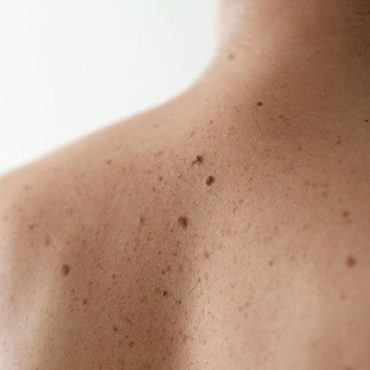
Regular Skin Checks Are Lifesaving
When diagnosed early (stage 1), the survival rate for melanoma is 99%, and that rate drops to 23% when it’s detected late (stage 4). Your best chance to catch it early is you.
Conduct skin self-exams monthly to set a baseline of what’s normal for you. That way you will be the first to recognize changes in your skin. See a dermatologist at least once a year.
1 in 5 Americans will develop some type of skin cancer. Melanoma is less common than other types, like basal and squamous cell carcinoma, and is the most dangerous form because it is likely to grow and spread to other parts of the body if not caught early. Learn how to catch it early.
When diagnosed early, the survival rate for melanoma is 99%. When diagnosed at stage 4, that number drops to 23%.
If you notice any of these symptoms or any changes in your skin, it’s time to get checked by your dermatologist or health care provider.
Do you have a sore that just won’t heal? Sometimes we forget the source of cuts, sores, or bruises, but if you have a sore that won’t heal after a few weeks, contact your provider.
Skin cancer can affect the nerves which may cause itching, numbness or tingling.
Pain on your skin accompanied by an unknown lesion, bruise, or sore that won’t go away.
If you have a dark bruise, including under your fingernails or toenails that won’t go away, this could be a sign of melanoma.
Skin cancer can form on the palms of your hands and soles of your feet. You can even develop skin cancer in locations that aren’t exposed to the sun, such as genitals, underarms, scalp, and between toes and fingernails.
Do You Know the ABCDE Rule?
This is another useful guide to check for skin cancer:
A. Asymmetry
One half of a mole/birthmark doesn’t match the other.
B. Borders
Edges are irregular, ragged, notched, or blurred.
C. Color
The color of the mole and/or birthmark may include different shades of color, or patches of pink, red, white, or blue.
D. Diameter
The spot is larger than 1/4 inch; melanomas might be smaller
E. Evolving
The mole is changing in size, shape, or color.
Hear from Skin Cancer Survivors
Maureen Chamberlain

Maureen Chamberlain loves being outdoors. An avid tennis player and biker, she was active and healthy when diagnosed with melanoma. Maureen has fair skin, so knowing her increased risk for skin cancer, she went for annual skin checks. Her persistence led to early detection and saved her life.
Joanie Cullinan

At 37, Wellesley Firefighter Joanie Cullinan was diagnosed with melanoma. Joanie took advantage of a free skin check offered by the Professional Fire Fighters of Massachusetts and shared her concerns about a spot on her back at her annual physical. It was melanoma, one of several cancers that firefighters have an elevated risk of developing.
Ryan Kelley

Ryan Kelley, 35, learned 3 Steps Detect at his fire station and took advantage of a free Firefighter Skin Cancer Screening that we offered with UMass Memorial Health. After examining a scab that wouldn’t heal, the doctor set up a biopsy for the next day, and Ryan later had surgery to remove the carcinoma.
Stacy Woods

As a teenager, Stacy Woods worshiped the sun and despite having a family history of cancer, thought she was invincible. Stacy was diagnosed with melanoma at 26. Because her cancer was caught early, she is now 20 years cancer-free.
Read Stacy’s story | Hear from Stacy
Kerri Paquette

At 25, Kerri Paquette thought she was too young to have cancer, and it led to a delayed breast cancer diagnosis. After her treatment, Kerri became a devoted advocate for DetecTogether and learned 3 Steps Detect. When she later had a strange spot on her skin, she knew not to wait and saw her doctor right away.
What Firefighters Need to Know
Firefighters have an elevated risk for many cancers, including skin cancer. They have a 21% greater risk of developing the deadliest form — melanoma. Firefighters can improve their outcomes with 3 Steps Detect, a free Online Learning for Firefighters.
His Father’s Son
Fitchburg Fire Captain PJ Roy recalls his father’s battle with squamous cell carcinoma and sends a strong message about the importance of early cancer detection.
Paying It Forward
Dermatologist Christine Kannler gives free skin checks to firefighters as a way to honor her late brother. Wellesley firefighter Joanie Cullinan attended one of the screenings and is grateful that Dr. Kannler noticed the irregular spot on her back, which turned out to be melanoma, the deadliest form of skin cancer.